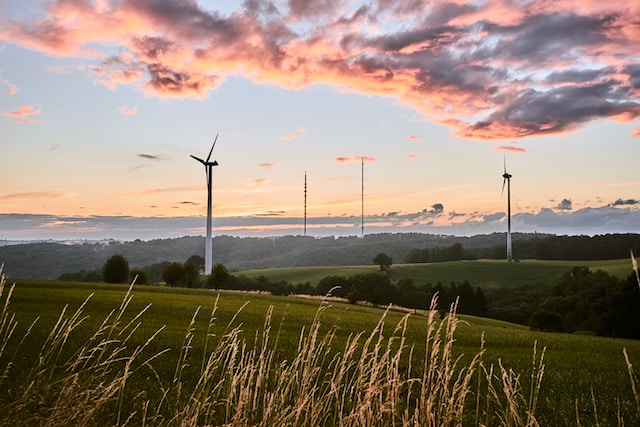
The world has witnessed some of the most revolutionary technological advancements in the past few decades. From smartphones to the internet, the development of technology has changed the way we live, work, and even think. However, this journey of innovation started long before the advent of modern technology and innovation.
Technology in the Prehistoric Age
The dawn of human civilization saw the birth of technology in its most primitive form. In the prehistoric age, humans relied on their ingenuity and resourcefulness to adapt to their surroundings and develop tools to aid their survival.
The Stone Age: The Foundation of Technology
The Stone Age marked the beginning of human technology and innovation, characterized by the use of stones as essential tools. Humans gradually learned how to shape and sharpen stones, creating versatile tools for various purposes, including hunting, gathering, and building shelters. They crafted hand axes, arrowheads, and scrapers, which provided them with an advantage in their struggle for survival.
The Discovery of Fire: A Transformative Technological Advancement
The discovery of fire stands as a pivotal moment in human history. By harnessing the power of fire, early humans were able to cook their food, making it more nutritious and easier to digest. Fire also brought warmth, protection, and light, enabling humans to venture into new environments and adapt to different climates. The control of fire essentially expanded their territories and paved the way for further innovation.
The Evolution of Tools and Implements
As humans progressed in the prehistoric age, their need for more complex tools grew. They developed techniques to shape and modify materials like wood, bone, and antler to create weapons, fishing hooks, and cutting tools. Their resourcefulness extended to using materials like animal sinews and plant fibers to bind and secure various components together, resulting in more effective and versatile tools.
Artistic Expression: Cave Paintings and Rock Art
Another remarkable aspect of technology and innovation in the prehistoric age was the emergence of artistic expression. Humans began to create cave paintings and rock art, utilizing natural pigments and various tools. These artistic endeavors demonstrated a cognitive leap, reflecting humanity’s desire to communicate, express emotions, and document their surroundings.
Ancient Technologies
The ingenuity and resourcefulness of early humans led to the development of various technological advancements in ancient times. These innovative creations not only improved their daily lives but also laid the foundation for future civilizations.

The Invention of the Wheel
One of the most significant technological advancements of ancient times was the invention of the wheel. The wheel, in conjunction with the axle, transformed transportation and revolutionized trade and commerce. With the ability to transport heavy loads much more efficiently, societies could expand their trade networks, leading to cultural exchange, economic prosperity, and the rise of flourishing civilizations.
Agricultural Innovations
As human populations grew, ancient civilizations faced the challenge of feeding their people. Through trial and error, they developed agricultural technologies that enhanced food production. Innovations such as irrigation systems, plows, and crop rotation techniques allowed them to cultivate more land, increase crop yields, and ultimately support larger populations.
Architectural Marvels
Ancient civilizations showcased remarkable architectural achievements that astound us even today. From the pyramids of Egypt to the Great Wall of China, these colossal structures were not only a testament to their engineering prowess but also showcased their understanding of complex mathematics, surveying techniques, and construction methods. These architectural marvels were not only functional but also served as symbols of power, religion, and cultural identity.
Writing Systems
The development of writing systems was a monumental technological advancement that forever changed the course of human civilization. From the hieroglyphs of ancient Egypt to the cuneiform script of Mesopotamia, writing provided a means to record history, convey knowledge, and preserve cultural traditions. It allowed for the accumulation of knowledge across generations and laid the groundwork for the intellectual growth of societies.
Medieval and Renaissance Technologies
The medieval and Renaissance periods witnessed a burst of technological advancements that propelled Europe into an era of innovation and discovery. From the invention of the mechanical clock to the development of printing press, these technological breakthroughs shaped the course of history and laid the groundwork for modern civilization.
Mechanical Clocks
In the late medieval period, the invention of mechanical clocks revolutionized the measurement of time. These intricate and precise timekeeping devices marked a fundamental shift in society’s perception of time. They allowed for more efficient scheduling, enabled accurate navigation, and played a crucial role in the organization of religious and civic events. Mechanical clocks also paved the way for the development of other mechanical devices, leading to further advancements in machinery and automation.
Compass and Navigational Instruments
The Renaissance period witnessed remarkable progress in navigation and cartography. The invention of the compass, a simple but essential tool, allowed sailors to navigate vast oceans with confidence. Navigational instruments, such as astrolabes and quadrants, aided in celestial navigation, enabling more accurate mapping of the world. These advancements in navigation opened up new horizons and led to the exploration and colonization of distant lands.

Gunpowder and Firearms
One of the most transformative technological advancements of the medieval and Renaissance periods was the discovery and refinement of gunpowder. Developed initially as a formula for alchemical experiments, gunpowder soon found its application in warfare. The invention of cannons and handheld firearms forever changed the dynamics of military engagements, shifting power away from traditional knights and castles. This revolutionary technology and innovation reshaped the strategies and tactics employed on the battlefield.
Printing Press
Arguably one of the most influential inventions in history, the printing press revolutionized the spread of knowledge and paved the way for the Renaissance. Invented by Johannes Gutenberg in the 15th century, the printing press allowed for the mass production of books and disseminated information on a scale previously unimaginable. It unleashed an intellectual revolution, enabling the free exchange of ideas, the dissemination of scientific discoveries, and the democratization of knowledge.
Industrial Revolution and Modern Technologies
The Industrial Revolution marked a significant shift in the history of technology and innovation, bringing about unprecedented advancements in manufacturing, transportation, and communication. This era of innovation set the stage for the modern world we live in today, where technology and innovation continue to evolve at an unprecedented pace.
Steam Power
The invention of the steam engine by James Watt in the late 18th century revolutionized industries and transportation. Steam power replaced manual labor, leading to the development of factories and the mechanization of production processes. Steam engines also powered locomotives and steamships, enabling faster and more efficient transportation of goods and people.
Telegraph and Communication Networks
The telegraph, invented by Samuel Morse in the early 19th century, transformed long-distance communication. Telegraph lines spanned continents, allowing people to send messages in near real-time. This technological breakthrough formed the foundation for modern communication networks and laid the groundwork for future inventions like the telephone and the internet.
Electricity
The harnessing of electricity in the late 19th century brought about a new wave of technological advancements. Electrical power revolutionized industries, providing efficient and reliable energy to power machinery and lighting. It also brought about significant changes in everyday life, including the introduction of electric appliances and the electrification of homes.
The Rise of Information Technology
The second half of the 20th century saw the emergence of information technology, which transformed the way we store, process, and access information.

The invention of computers and the development of the internet revolutionized communication, research, and the sharing of knowledge. This digital revolution has led to the creation of smartphones, laptops, and other smart devices that have become integral parts of our lives.
Current and Future Technologies
As we stand on the brink of the future, technology and innovation continue to evolve and shape the world around us. From artificial intelligence to virtual reality, here are some of the most exciting and promising current and future technologies that are poised to revolutionize various aspects of our lives.
Artificial Intelligence (AI)
Artificial intelligence, a field of computer science, aims to create machines that can perform tasks that typically require human intelligence. AI is already being utilized in various industries, from healthcare to finance, to enhance efficiency and accuracy. Machine learning, a subset of AI, enables computers to learn from data and improve their performance over time, fueling exciting possibilities for the future.
Virtual and Augmented Reality (VR/AR)
Virtual reality and augmented reality technologies have the potential to reshape our perception of reality. With VR, users can immerse themselves in virtual environments, allowing for new forms of entertainment, education, and training. AR blends virtual elements with the real world, opening up opportunities in fields like medicine, architecture, and gaming. These technologies hold immense promise in enhancing our experiences and pushing boundaries.
Internet of Things (IoT)
The Internet of Things refers to the interconnection of everyday objects, allowing them to send and receive data. IoT enables us to have smart homes, where devices like thermostats, appliances, and security systems are connected and can be controlled remotely. Beyond homes, IoT has broader applications in monitoring and optimizing industrial processes, improving healthcare outcomes, and creating more sustainable cities.
Renewable Energy Technologies

The need for clean, renewable sources of energy has become increasingly urgent. Technologies like solar panels, wind turbines, and hydroelectric power are gaining momentum in providing sustainable alternatives to traditional fossil fuels.
As these technologies continue to advance, we can envision a future where our energy needs are met without harming the environment.
Biotechnology and Genetic Engineering
Advancements in biotechnology and genetic engineering have the potential to revolutionize healthcare and agriculture. From gene-editing techniques like CRISPR-Cas9 to the development of personalized medicine, these technologies offer new ways to treat diseases, improve crop yields, and address global challenges like food security. Bioengineering holds the promise of transforming our understanding of life itself.
As technology and innovation propels us into the future, it is crucial to approach these advancements with responsible stewardship. Balancing innovation and ethical considerations is essential to navigate the potential risks and harness the vast potential these technologies offer. The current and future technologies discussed here represent just a glimpse of what lies ahead. The journey of human ingenuity and technological progress is an ongoing adventure, and it is up to us to embark on it with wisdom and mindfulness.


